
Weather station
The weather and the climate have a significant influence on the development and health of our bees. The development of the weather and the effects on our bees is of particular interest to every beekeeper.
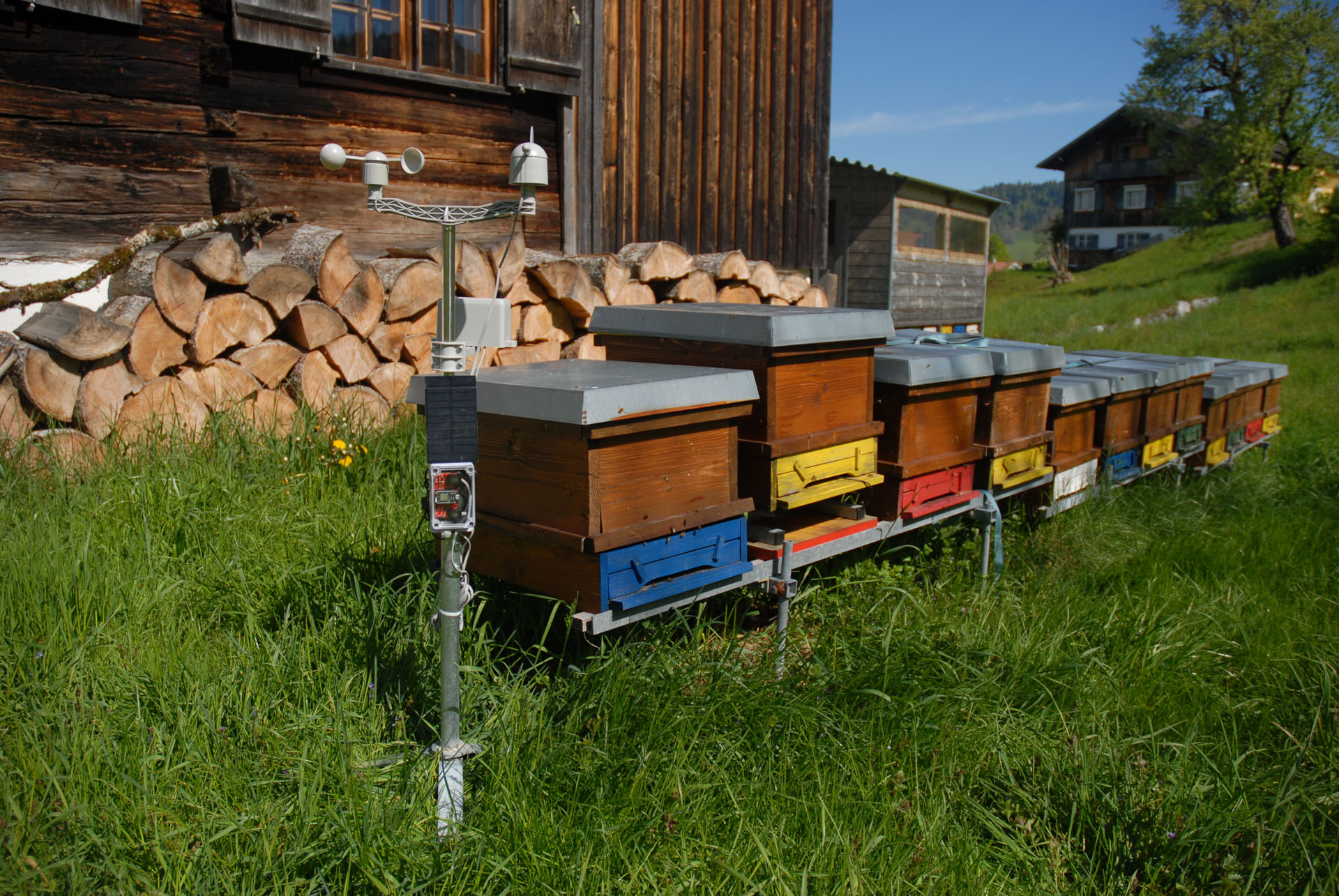
Materialliste
Beschreibung
With the help of the weather station, various connections between the weather and the development and health of our bees can be recognized and analyzed. Every beekeeper has certainly already been able to observe certain connections, but has no specific figures or records. In some cases, the weather and climate have a direct influence on our bees. In some cases, however, the relationships are also very complex.
Every beekeeper has been able to observe that the outside temperature has a direct effect on the breeding activity in the bee colony, especially in spring. If it is very warm, a colony of bees can take care of more brood and development progresses much faster.
The weather and climate also have an impact on the vegetation and thus on the food available to our bees. In the case of the forest honey costume, the relationships become even more complex. The honeydew is produced by lachnids and leccans, whose reproduction in turn depends on their food supply. These feed on the sap of the trees. These in turn need water and thus sufficient precipitation and soil moisture.
Many beekeepers have certainly already observed that particularly strong bee colonies really collapse in a very short time due to the varroa mite in late summer. A strong bee colony can start breeding much earlier in the spring than a weak bee colony. However, this also enables the varromite to have more development cycles and thus to reproduce more quickly. This relationship could be examined much more closely via the incubation temperature.
Many questions and observations can be better answered with the help of a weather station. An inexpensive weather station that can be assembled and operated by anyone should support the beekeeper in his work and lead to new knowledge.
The assembly of the weather station is done in a few minutes with the Photon Weather Shield.
Aufbau und Hardware
Weather sensors
The Weather Meter from SparkFun is used for the weather station. This weather sensor contains the 3 core components: wind speed, wind direction and amount of rain.
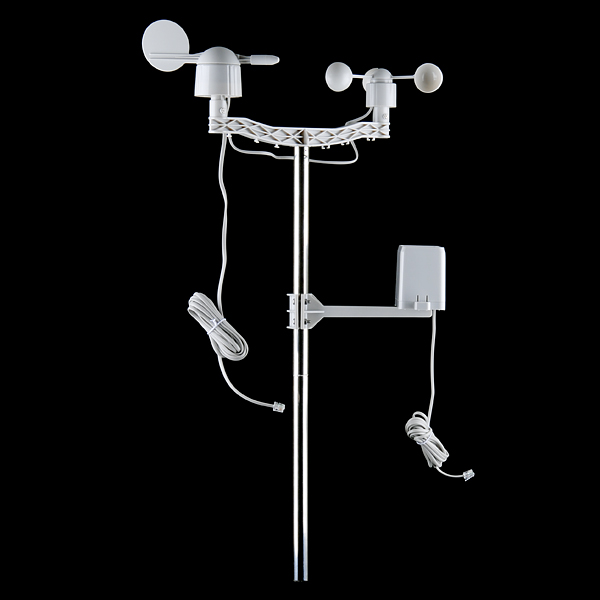
The rain measuring instrument consists of a rocker with 2 self-emptying baskets with a capacity of 0.011 "rain per basket. When a basket is full, a button is activated. Thus, only the number of impulses per time unit has to be determined in order to be able to determine the amount of rain.
The anemometer (wind speed meter) measures the number of revolutions. A switch is operated with each rotation. At a wind speed of 1,492 MPH, the switch closes exactly once per second.
The wind direction is determined via a voltage that changes with the wind direction due to the combination of resistances within the sensor. Up to two switches can be operated simultaneously using magnets. This means that 16 different positions can be displayed. More detailed information can be found in the data sheet .
Soil moisture sensor
The Soil Moisture Sensor from SparkFun is used to measure soil moisture or soil moisture.
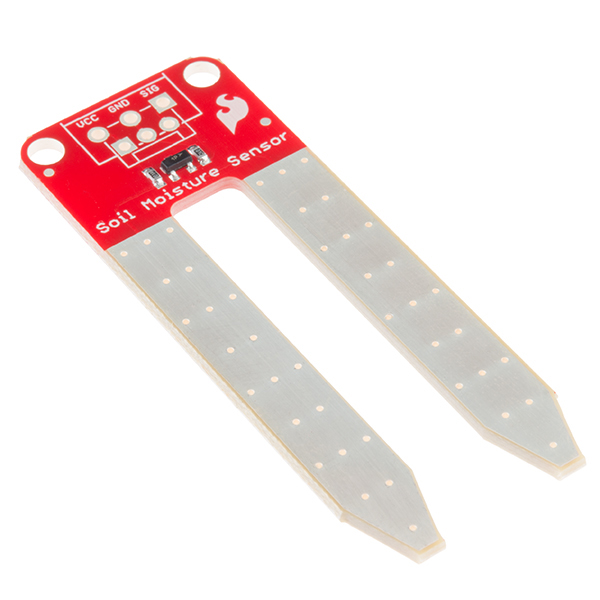
The two exposed pads act as probes for the sensor that change their resistance due to the moisture in the soil. The more water in the soil, the greater the conductivity of the pads and the lower the resistance. SIG then delivers a higher value.
The sensor must be connected to the microcontroller board (Photon or Arduino) with VCC (3.3V or 5V) and GND. SIG is connected directly to an analog input on the microcontroller board.
Floor temperature sensor
The temperature sensor DS18B20 is particularly suitable for measuring the floor temperature. It is a precise and waterproof temperature sensor with 1-wire technology. The DS18B20 supplies 9 - 12 bit (configurable) temperature values via a 1-wire interface. In addition to VCC and GND, only one other connection to the microcontroller is necessary.
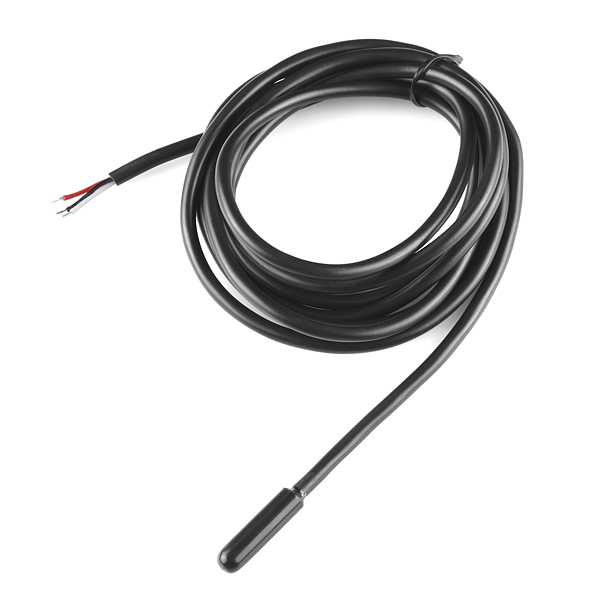
SparkFun Photon Weather Shield
The SparkFun Photon Weather Shield has an air pressure sensor (MPL3115A2) and a humidity and temperature sensor (HTU21D humidity). The wind direction and wind speed sensor and the rain measuring instrument can easily be connected via two RJ11 sockets. The sensors for soil moisture and soil temperature can be soldered to 3 soldering eyes each.
The Photon microcontroller board with WLAN module from Particle can be plugged in directly.
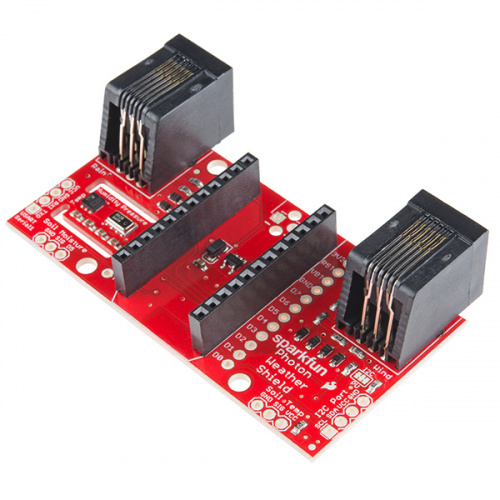
The assembly of the weather station is done in a few minutes with the Photon Weather Shield.
Particle photon
Particle's Photon is a microcontroller board with an STM32 ARM Cortex M3 microcontroller and a Cypress Wi-Fi chip. It has 1MB of flash memory and 128 kB of RAM. Due to its low power consumption, it is particularly suitable for autonomous outdoor applications.
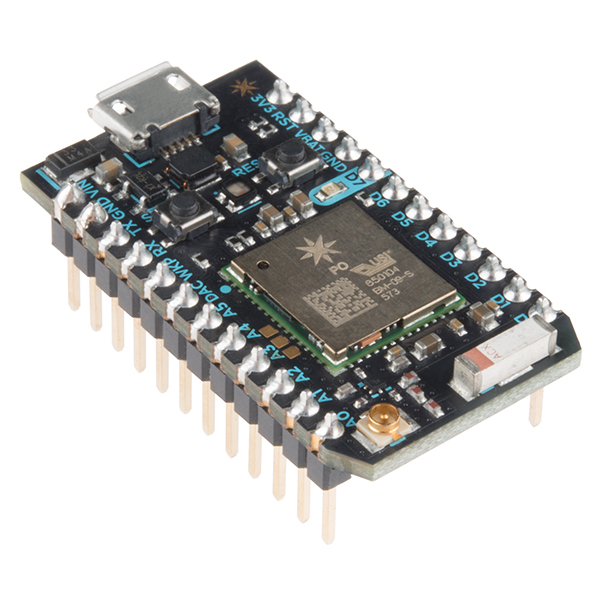
SparkFun Sunny Buddy
SparkFun's Sunny Buddy is a Maximum Power Point Tracking (MPPT) solar charge controller for single-cell LiPo batteries. This solar charge regulator gets the maximum power out of the solar cell and stores it efficiently in the LiPo battery. The connection of the solar cell on one side of the board and the LiPo battery on the other side is very easy.
The Sunny Buddy charges the LiPo battery with a maximum of 450 mA. The recommended input voltage is between 6 - 20 V.
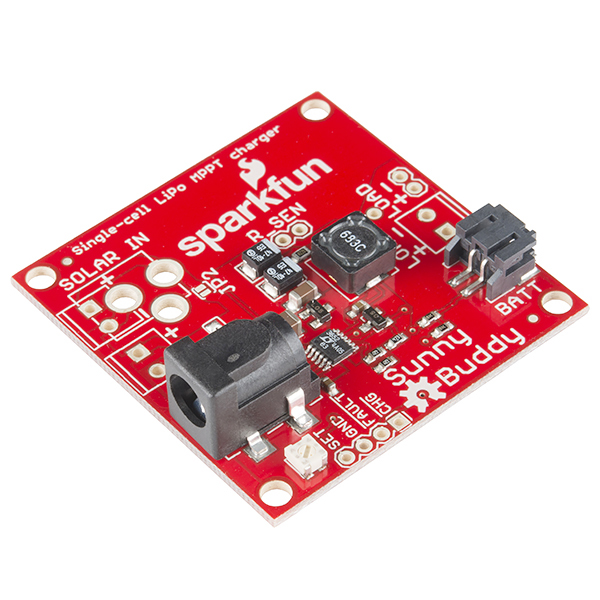
Solar panel
A solar panel is of course required for the autonomous operation of the weather station over a longer period of time. The Sunny Buddy should be operated in a voltage range between 6 V - 20 V, which is why a 6 V or 12 V solar panel would be suitable. The necessary performance depends on several factors (especially solar radiation and software).
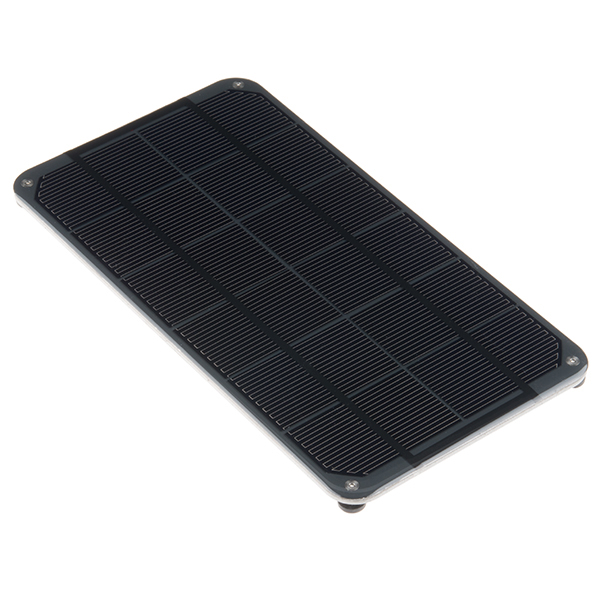
Installation und Programmierung
The Particle Photon is used for the weather station. A microcontroller board with a Wi-Fi module. Particle offers additional cloud services that make it much easier to network the devices with other web services such as the cloud4Bees data server.
In this project I decided to use the Particle Command Line Interpreter (CLI). This makes working with the photon much easier. The Particle CLI is a node.js application for working with the Paricle Photon and the Particle Cloud. The Particle CLI is used to connect the Photon to the internet and to the Particle Cloud.
Install Particle CLI (Windows)
To install the Particle CLI on Windows, node.js must first be installed.
1.) Go to https://nodejs.org/de/download/ and download the appropriate (32-bit or 64-bit) installation file.
2.) Double click on the .msi file to start the installation wizard. Follow the instructions of the wizard.
After the successful installation of node.js on the operating system, the Particle Command Line Interpreter can now be installed very easily:
1.) Open the Windows command prompt
2.) nmp install -g particle-cli
Create a free Particle Cloud account
Go to https://build.particle.io/signup to create a new Particle Cloud account.
Setup photon
1.) Connect the Photon to the PC using a USB cable
2.) Switch photon to listening mode (LED flashes blue)
To switch the Photon to listening mode, the SETUP button must be pressed for at least 3 seconds until the LED flashes blue.

The Photon is now waiting for the input for the WLAN network.
3.) Open the Windows command prompt.
particle login
4.) Seup Photon
particle setup
Programming Particle Photon
1.) Download the firmware from the Github repository.
2.) Open a Windows command prompt
3.) Change to the folder with the binary file .bin
4.) Connect the Photon to the PC using a USB cable
5.) Change the photon to DFU mode (LDE flashes yellow). First press both buttons. The reset button is now released and the setup button is held until the LED flashes yellow.
6.) Transfer the binary file to the Photon with the following input in the Windows command prompt:
particle flash --usb photon_1.0.1_firmware_xxxxxxxxxxxxx.bin
7.) After the program has been transferred, the Photon automatically reconnects to the Internet and the Particle Cloud and the program is started.


